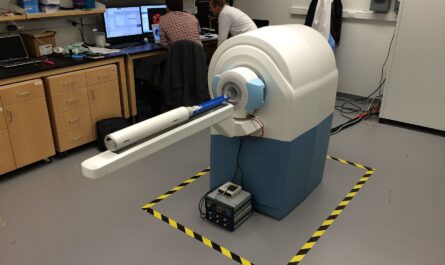
The global orthobiologics market has witnessed substantial growth in the past few years owing to the rising demand for advanced tissue and bone regeneration products during orthopedic surgical procedures. Orthobiologics products such as bone grafts, platelet rich plasma therapies, cell-based matrices, and viscosupplementation agents are increasingly used in knee, hip, shoulder, and spine reconstruction surgeries as they help enhance bone healing and reduce recovery time post-surgery. The use of stem cells, genetically engineered proteins and tissue-engineered products is expected to revolutionize regeneration therapy for tendons, cartilage and bone injuries. The global orthobiologics Market is estimated to be valued at US$ 6,515.02 Mn in 2023 and is expected to exhibit a CAGR of 5.9% over the forecast period 2023 to 2030, as highlighted in a new report published by Coherent Market Insights.
Market key trends:
The key trends in the orthobiologics market include the growing demand for osteoconductive bone graft substitutes over autologous bone grafts due to related morbidity. Synthetic bone substitutes offer viable graft alternatives with greater availability, sterility, ease of handling, and decreased patient morbidity compared to autologous bone grafts. Additionally, there is an increasing prevalence of Reverse Shoulder Arthroplasty (RSA) which is a procedure involving replacement of the glenoid with a metal tray to treat rotator cuff tear arthropathy or irreparable rotator cuff tears. This has significantly boosted the demand for orthobiologics for shoulder reconstruction. Furthermore, tissue-engineered products that aim to regenerate tendons, ligaments, meniscus and cartilage are gaining traction and their commercialization over the forecast period is expected to offer new opportunities in the market.
Porter’s Analysis
Threat of new entrants: The orthobiologics market requires large investments in R&D to develop new products. Stringent regulations by regulatory agencies also act as a barrier for new companies.
Bargaining power of buyers: Individual buyers have low bargaining power due to specialized nature of orthobiologics products. However, group purchasing organizations have some negotiating power.
Bargaining power of suppliers: A few large companies dominate the supply of raw materials for orthobiologics. This gives them significant bargaining power over manufacturers.
Threat of new substitutes: New biomaterial technologies pose a potential threat, but complete substitutes are yet to emerge for orthobiologics in trauma and spinal surgeries.
Competitive rivalry: The market is highly competitive with presence of large global players. Manufacturers compete based on product features, quality, and effective marketing.
Key Takeaways
The global orthobiologics market is expected to witness high growth driven by rising incidence of orthopedic diseases and injuries.
Regional Analysis: North America currently dominates the market owing to availability of reimbursements and supportive regulatory environment in the region.
Key players operating in the orthobiologics market include Zimmer Biomet, Bone Biologics Corp., Globus Medical, Smith & Nephew Inc., Stryker, ATEC Spine, Inc., XTANT MEDICAL, Johnson & Johnson Services, Inc., Exactech, Inc., Integra LifeSciences, Medtronic, NuVasive, Inc., Orthofix US LLC., SeaSpine, ChitogenX Inc., Spine Wave, Inc., Molecular Matrix, Inc., Isto Biologics, Baxter, Locate Bio Limited, Cerapedics, Ossifix Orthopedics, and Aziyo.
*Note:
- Source: Coherent Market Insights, Public sources, Desk research
- We have leveraged AI tools to mine information and compile it



